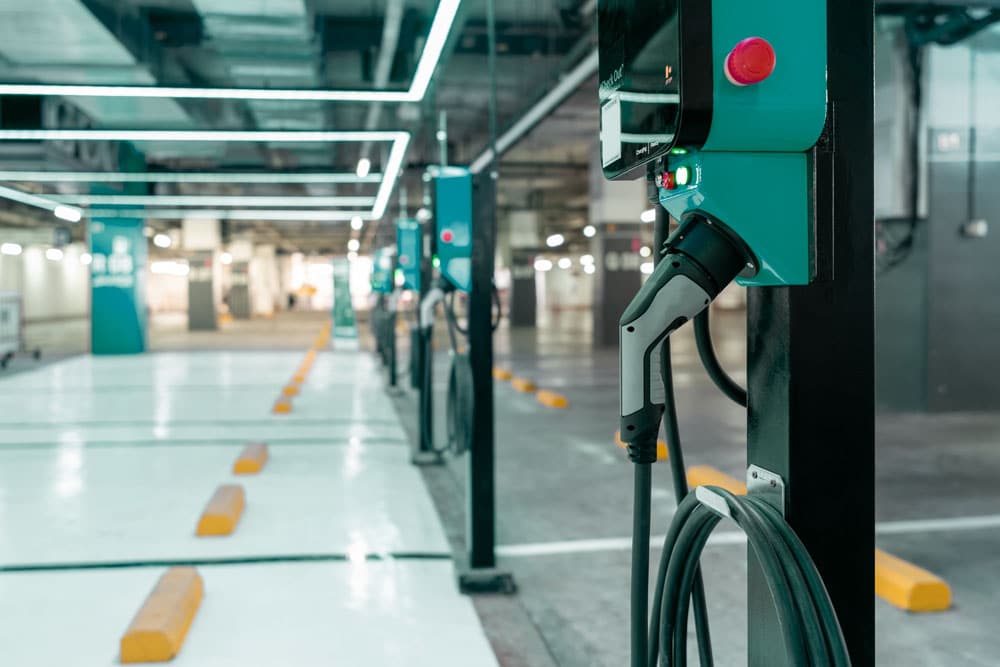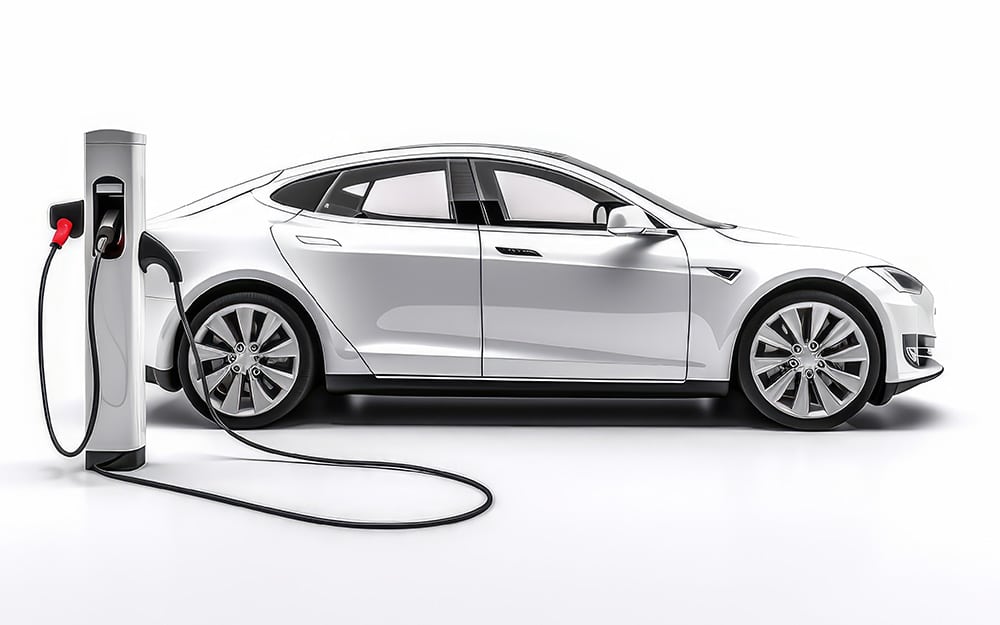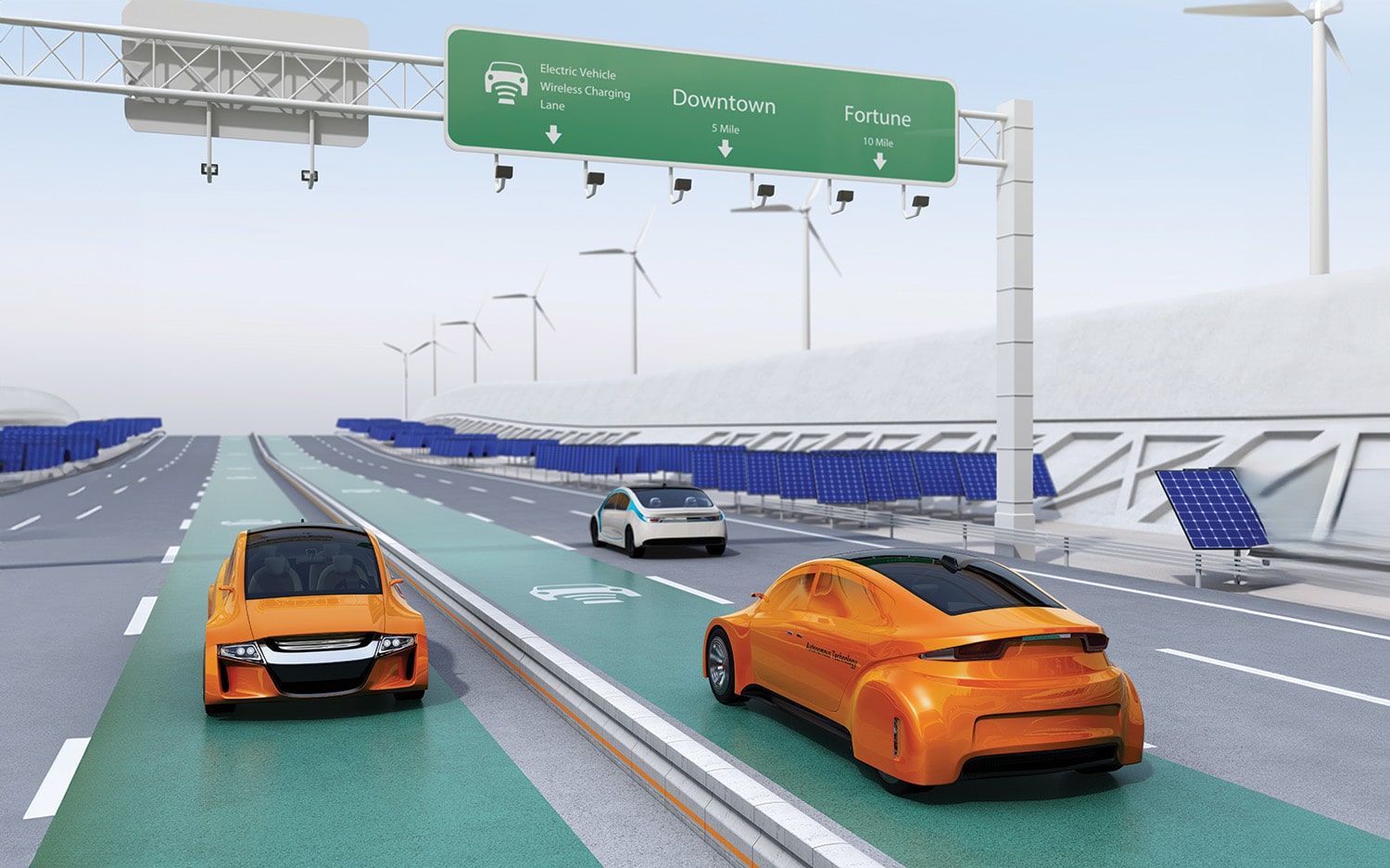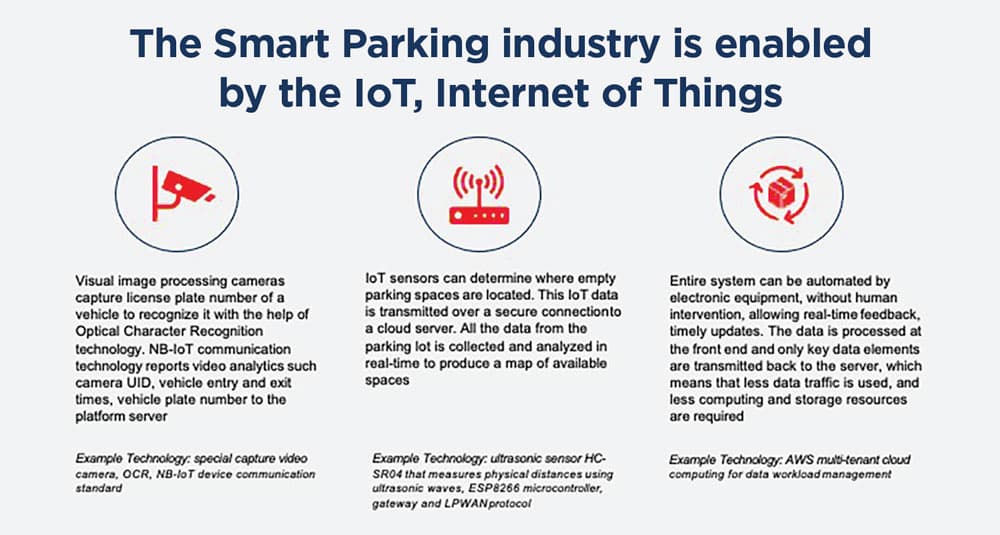Airport Parking
Needs to
Get Smart
Airport Parking Needs to
Get Smart




By Josh Feinberg and Scott Hutchison
Let’s face it, historically airport parking has had the reputation of being painful. Have you ever pulled into an airport parking facility only to be informed that it is full? Yet surprisingly you see cars leaving that same lot. Now comes the moment of truth. Should you wait until the attendant decides to open the lot again? Do you frantically search for another lot risking the chance it will be so far from your terminal that you’ll risk missing your flight?
Don’t underestimate the importance of the airport parking experience. The travel journey often begins with parking. It sets the stage as the first touch point before departure and is the last after a return. The mismanagement of these parking spaces not only affects the passengers—it increases inefficiencies, congestion, and cuts into overall profits.
As technology makes air travel easier, airports can now serve more passengers within the same terminal space, making overcrowding and congestion on airport roadways and curbsides outside the terminal a serious problem. Previously, an airport terminal that was designed to process one million annual enplaned passengers needed a ticket lobby that could process one million passengers per year. Now, that same ticket lobby can handle four to five million passengers annually, or more.
Since the pandemic, people are also more likely to use their vehicles for solo travel and avoid shared mobility, including public transportation. When you look at the numbers, you realize that the parking issues today are not going away and may soon become exponentially worse.
Thankfully, smart parking systems offer solutions.
Imagine a Smarter Airport Parking Experience
The Internet of Things (IoT) has been a driving force behind many technological innovations in the world. It has helped businesses and organizations improve their services, provide better user experiences, and paved the way for technological advancements that were previously unthinkable.
Since digital technology seems to connect almost everything today, it is no surprise that airports—the infrastructure that helps billions of travelers connect across the globe each year—are themselves becoming more digitally connected. The growing adoption of integrated automation solutions, advancements in IoT and wireless technologies as well as digital payment technologies is creating an opportunity for airport operators to achieve strategic differentiation through improved traveler experience, greater efficiencies, and new revenue streams.
While these technologies can be deployed across virtually all stages of the traveler journey, there are many ways they can be applied to create a more seamless and convenient parking experience. Parkers can pre-book spaces, change reservations in real time, take advantage of improved wayfinding to optimize routes, and get in and out faster with less stress. Plus, they can opt for more premium services such as valet, EV charging, and priority parking spots.
An Architecture to Create Smart Parking
A complete technology architecture is necessary to unleash the full potential of smart parking. This type of architecture brings together the disparate components of the airport parking infrastructure—such as parking access revenue control systems (PARCS), parking guidance systems (PGS), reservations, license plate recognition (LPR), EV charging, valet management—and transforms them into a harmonized solution.
With a well-designed architecture in place, airport facilities can realize such benefits as:
- Better managed demand and inventory through pre-booking.
- Demand-based pricing to optimize revenue potential per stall.
- Social media advertising campaigns to drive volume.
- Reduced garage management expenses through cashier-less entry and exit.
- Eased traffic congestion near terminals and reduction of associated carbon emissions.
Let’s look at some of the key technologies that enable this type of complete smart parking ecosystem.
Leveraging the Data
A robust architecture will drive meaningful business intelligence that is accessible to all stakeholders that need it.
Mobile payment systems, along with parking intelligence software, provide a wealth of granular data that can be leveraged to prevent cost overruns and effectively address customer needs. Raw data (e.g., occupancy rates, length of visits, and number of monthly vs. transient customers) can be translated into actionable operational plans. These data-driven insights can inform dynamic pricing, set peak and off-peak rates, and make price adjustments on the spot.
Business intelligence tools are available to enable integration across multiple parking data systems and provide access to current analytics across the country. These types of tools can also allow customized shuttle and transportation programs. This right-sizing approach better meets peak demands and seasonal changes while maximizing efficiency and net operating income. Other technologies are available to improve busing operations including parking guidance systems, passenger count systems, next bus info, and pre/post trip management.
Touchless is the New Normal

New models of working and COVID-related concerns have caused a shift in behavioral trends as people are looking for safer, faster, easier, and convenient parking options. Today, people of all ages are more comfortable performing daily tasks through mobile devices and limiting physical contact with other people and their exposure to surfaces.
Frictionless parking consists of using apps for guidance, reservations, and payment, as well as license plate or vehicle recognition technology to enable hands-free parking. Online booking systems allow travelers to easily reserve parking spots, premium services, and opens the opportunity to sell in-airport goods and services. License plate recognition (LPR) aids in charging parkers the right rate for the parking spot they actually parked in (EV, premium parking, etc.) even if it is different than booked.
Parking guidance systems (PGS) typically employ adaptive lighting sensors, parking space indicators, and indoor positioning systems to facilitate the vehicles circulation within controlled parking areas by presenting parkers with dynamic information about the occupancy of parking stalls. PGS can also offer important analysis of parker behavior and utilization patterns.
For premium-level service, airport parking facilities should consider a ticketless valet program. During the arrival process, the parker provides their mobile number and receives their “valet claim check number” digitally via text message. The valet team use chip encoded reusable key tags and hanger tags to track and identify keys and vehicles. Besides being convenient for the guest, it is environmentally friendly and helps the valet operator improve revenue by eliminating internal theft and ticket skimming. Offering valet parking at the busiest entrance points to the airport eliminates the need for driving around and parking in a remote location, improves traffic flows to prevent bottlenecks near high traffic entrances and enables hurried travelers to catch their flights on-time and less frazzled.
Connected cars will drive the evolution of parking even further. The next generation of cars—loaded with sensors, IOT devices and apps—will communicate with other devices and even make their own decisions. With in-car technology, parkers will be able to book, pay and find their way all from inside their vehicle, no smartphone needed.
EV Infrastructure
As more electric vehicles populate the road, parking facilities lacking modern EV charging infrastructure will be increasingly passed over. Staying up to date on the latest technologies and trends is essential in creating efficient, sustainable, and cost-effective operations.

With a smart parking infrastructure, connected EV charging stations can provide a new revenue stream for facilities, improve sustainability metrics, and deliver a key differentiator.
With a centralized and connected infrastructure, the system can analyze users’ data and identify behavior pattern to offer a user additional service and better support. New types of revenue models can emerge including premium EV parking, combining parking and charging fees, and variable pricing based on the length vehicles are parked.
Facilities can also perform remote support and maintenance. The same infrastructure used to support customers’ vehicles can be multipurposed to support your own transition to an electric operational fleet and reduce a facility’s carbon footprint.
Smart Parking in the Real World
One busy international airport system has already successfully implemented one of the most advanced economy parking facilities with new smart parking technology—from website links that help customers pre-book their parking online to integrated systems that eliminate the need to use tickets in entry and exit gates.
The new facility’s systems are all integrated with IT and operational management systems. A centralized integration platform allows all systems to share data in real-time, which provides operations with a complete picture of the parking facility and customers with a more seamless parking experience. Integration between the reservation system, parking and revenue control system and parking guidance system improves wayfinding for the customer within the parking facility—from understanding where they should park, to how to find their vehicle when they return.
Vehicle recognition system reads license plates, identifies state jurisdiction of each plate, and can recognize the make and color of vehicles to confirm pre-booked reservations, thereby eliminating the need for tickets. At exit stations, cameras collect such data before vehicles reach the kiosk, match it to prepaid reservations and transient paid tickets then open the gate in less than two seconds. The system’s impressive speed and accuracy increases vehicle throughput and reduces idling and associated carbon emissions. The system helps further reduce carbon emissions within the facility because drivers spend less time driving to search for spaces to park.
Another element that supports sustainability is its robust infrastructure for electric vehicles. The new Economy Parking structure includes more than 500 EV charging spaces, bringing the airport’s total to about 1,200. It also laid the groundwork for 1,100 more charging stalls and included infrastructure that would allow the facility to monetize charging stations in the future.
An ecommerce SaaS platform provides landing pages about parking from links on the main airport website and in paid search ads. These pages provide relevant content based on customer search terms. If customers type “cheap airport parking” into a search engine, for example, this app directs them to a landing page tailored toward those key search terms.
The Future is Here
Smart parking is a strategy that airports can leverage now to deliver an enhanced parking experience, create real-time insights, reduce operating expenses, and increase revenue opportunities.
As airports become more digitally connected, IoT and other technologies will open a world of opportunities. Soon, cars will simply drive in and out of an airport parking garage with no direct interfaces with revenue equipment at all. A truly frictionless, ticketless, and gateless experience.
shutterstock / Sean Pavone
stock.adobe.com/ Artinun

Seven-Generation Decision-Making
A major factor of sustainability is thinking about how we

Electric Vehicle Charging Operations Research
Preliminary Results





